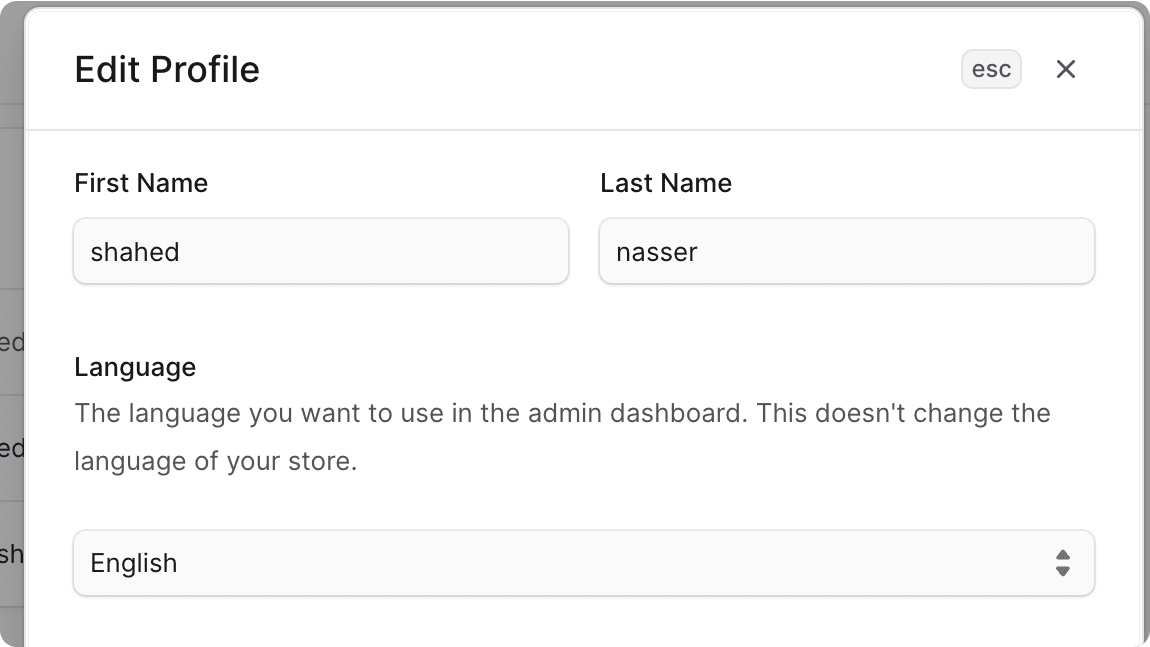Manage Profile in Medusa Admin
In this guide, you’ll learn how to view and manage your profile's details and settings.
View Profile Details#
To view your profile details, go to Settings → Profile. You can alternatively click on your name at the bottom of the sidebar, and choose "Profile settings" from the menu.
In your profile details page, you can view your profile information such as your name, email, and language settings.

Edit Profile Details#
To edit your profile details and settings:
- Go to Settings → Profile.
- Click the icon in the main section's header.
- Choose "Edit" from the dropdown.
- In the side window that opens, you can edit your first and last name, and the Medusa Admin dashboard language. This only changes the language of the admin interface, not the language of the store. It also doesn't change the language for other users in the admin.
- Once you're done, click the Save button.
Tip: Can't find your language? Learn how you can contribute by translating the admin to other languages here.

Was this guide helpful?